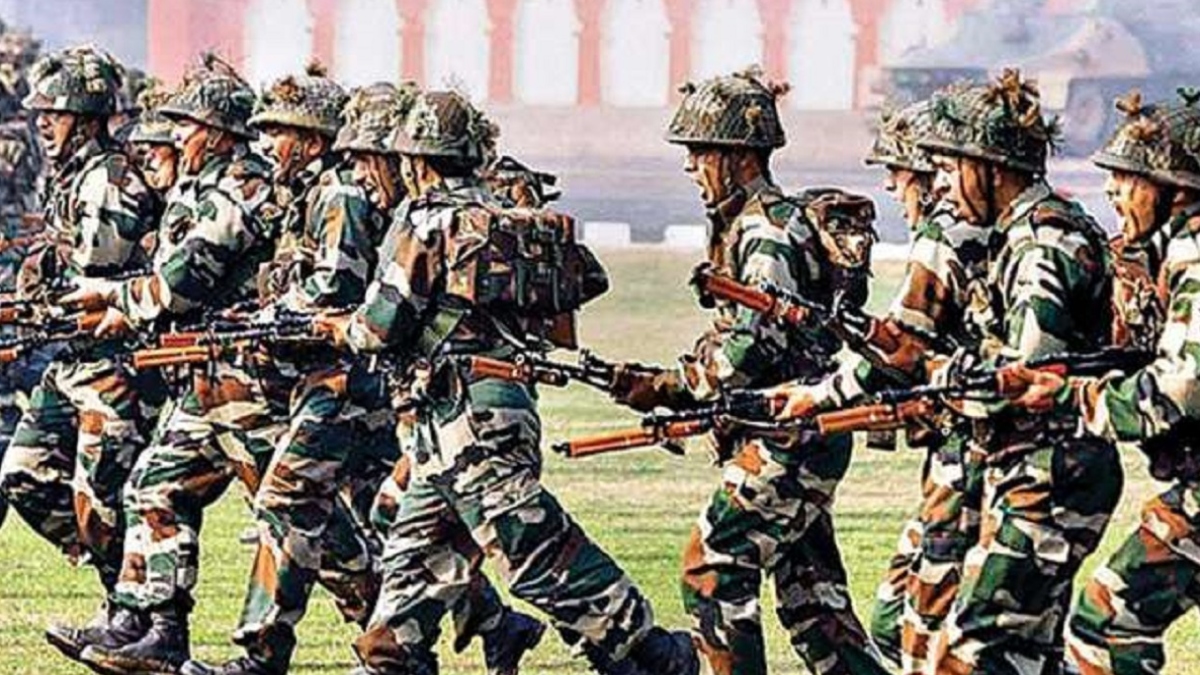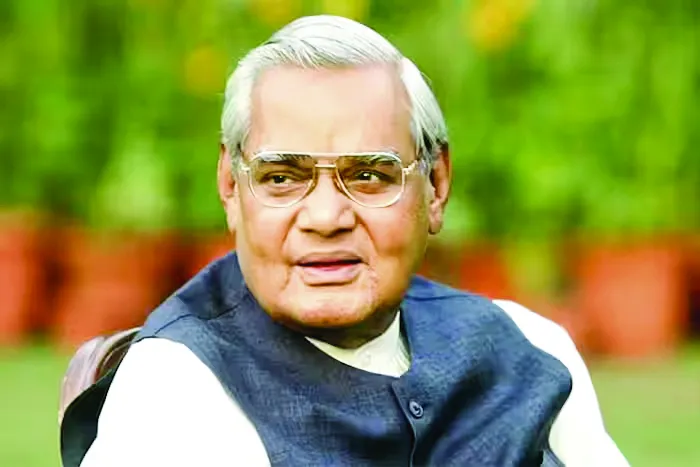Who will decide what is good for the Armed forces? Definitely it is not the people who have come on the streets to oppose the new recruitment policy. Definitely it is not the Opposition parties that are trying to find out fault with everything that the Narendra Modi government does.

Department of Military Affairs Additional Secretary Lieutenant General Anil Puri addresses a press conference regarding the Agnipath Recruitment Scheme, at South Block Ministry of Defence, in New Delhi on Sunday. Vice Admiral Dinesh Tripathi and Air Marshal Suraj Kumar Jha are also seen. ANI
Then who will decide? Of course, it is the Armed forces that will decide what kind of equipment they need to keep pace with the technologically advanced world. They would also decide the kind of men needed to perform the prestigious task. The need of the hour is able-bodied youth, uncorrupted by the influence of society and keen to do something for the country.
The institution is such that it would transform these youth into well trained individuals expert in use of firearms and modern technology. The “Agniveer” title suggests the same. They are the fire warriors the country needs to handle its strategic defence. Winning war is a sum-total of technology and youthful energy. The government’s job then becomes that of the facilitator. Within the resources available what is the best way out. And once the best way is decided the job remains to walk the talk and stand by the armed forces like a rock. This is exactly what the Narendra Modi government is doing.
The Opposition parties that have tried to fan the anger of people are playing with fire. Leave the Army out of your politics and listen to what the institution is telling you. You want a fighting fit force or you want the Army to become a recruitment ground for unemployed youth. Close to 45,000 jobs per year in the army as Jawans is no solace in the country where jobs are needed in crores. For the uninitiated, the Kargil Review Committee set up after India’s breathtaking victory at Kargil had recommended a younger profile for the young recruits. The committee was set up in July 1999 and its report was tabled in Parliament in February 2000. While Kargil was a swan song for military genius of our brave soldiers who pushed back the Pakistanis, it was also marked for intelligence failures. How could the Pakistanis get ensconced so high on the mountains without getting noticed by anyone?
It was the young officers and jawans who made this victory possible. It was the most difficult battle since the enemies were firing from the top. But the bravery of our young soldiers snatched victory from what appeared to many to be an impossible task. A young army means an agile army and a daredevil effective army.
The current average age of a solider is 32 which is young by civilian standards, but old by Army standards, particularly when one aspires to be a world class army. It is not that people become ineffective between 25-40 since they are still young and there should be no discrimination on the basis of age. But the fact remains that as one grows in age, one is faced with various responsibilities of home and family. This hinders soldiering when compared to a 25-year-old who is free from all fetters and wants to rise in life by showing example.
Close to 50,000 soldiers retire every year at the age of 35-40. They are at the peak of their youth and have a family to support. The army organises retraining and skilling of these people to give them a second career. Under the Agnipath scheme, the Agniveers who would join at 18 would retire at 22 (after four years). With discipline of the army and an enhanced educational qualification, he would be in a much better situation to plan his career.
How many youth in our country get settled by the age of 25? He is hardly able to understand the society and ends up becoming a burden till he finds a petty job to support his family. How many rural families can support higher education for their children to empower them to get six-figure salary? And how many people in this country would get that kind of salary? An Agniveer would walk in society with the confidence of an empowered young man and he would be able to decide what is best for him.
Not only will he earn close to Rs 20 lakh as salary in the four years of his dedicated service, he will also get the training of a world-class army. If he continues to prove his worth and has the fire to be a soldier, he would definitely qualify for being retained in the permanent tenure. Twenty-five percent absorption is a very high percentage.
Now consider that he does not make it to the 25%. With experience and exposure, he may not even want to continue. Some may find that the rigours of hard work and demand from the family do not match. He has the best of both the worlds. He walks away with a non-taxable amount of Rs 11.5 lakh. He can start something on his own with banks ready to give liberal loans in viable schemes. Or he can plan his second innings when his peers have not ever started their first.
He has the option to try various para-military forces under the Central government or state police or various other organisations. Most BJP-ruled states have announced they would give preference to recruiting Agniveers in their police force. This opens up immense possibilities. They would definitely score better than average candidates because of their skill, physical fitness, discipline and the fact that they have already served in the army.
Army should not be seen as a job-opportunity but a platform for youth to serve the country. The opportunities provided by Agnipath would enable youth to give vent to their aspiration. This would be a process by which youth would join, get training and serve the army as battle ready Agniveers and would exit the system after four years to explore greener pastures. They will have an edge over others.
Under the Agnipath scheme, the young man is still in his teens. He has a strong body that can sustain hard work and discipline. What he would get from the army is training on firearms and various other skills and most important the feeling of patriotism and national pride. This would be a deadly cocktail of muscle power and firepower combined with the willingness to sacrifice for motherland.
Those who cry over the security of tenure and assurance of another career that motivates people to join the army are missing the ideology behind the Agnipath Scheme. You come out young and join the same peer in your village and notice the transformation you have witnessed. The empowerment is the assurance.
The Agnipath scheme should also be seen in the context of India’s security needs. India is not lucky to have easy neighbours. It is also not lucky to have a NATO kind of military alliance that ensures safe boundary and gives guarantee of security. There was a time when our leaders thought that India did not need a big army since it did not have enemies. But history proved otherwise.
The Pakistan war immediately after independence and China in 1962 proved that two capricious neighbours could not be trusted. One has been sulking for becoming a failed state though both India and Pakistan started their journeys together; and the other has been blinded by its expansionist design where it sees India as a threat. India has marched ahead and now has the third largest army in the world after China and the US. It has been able to hold its head high without compromising on its principles because of its strengths. It is time we decide that the numbers get the boost of agility and flexibility needed in the high-tech oriented warfare.
If you watch the discussions of Agnipath Recuritment Scheme on Pakistani news channels you would know how this has sent chills down the spine of those Pakistanis who consider India to be their enemy. The common refrain is our army would be no match to Indians. They have been arguing that Modi has done for the country what no other leader has done before. He would wrest PoK from Pakistan and destroy Pakistan is the narrative there.
But Indians are debating and taking demonstrations by youth as a symbol of opposition to the Modi government. The Modi government has tried to implement the recommendations of various committees that looked into giving the armed forces a much younger profile. The need is to bring it down from an average of 32 years at the present to 25-26 years in times to come.
Those who are trying to stoke protest should know that the government has all the wisdom to understand implications of this scheme. It is just that the Prime Minister believes in taking decisions rather than keep things hanging. Everyone knows that the situation of the armed forces when the United Progressive Alliance (UPA) had to demit office was not very pleasant. It did not have ammunition to sustain a war for even 20 days.
It is not that people become ineffective between 25-40 since they are still young and there should be no discrimination on the basis of age. But the fact remains that as one grows in age, one is faced with various responsibilities of home and family. This hinders soldiering when compared to a 25-year-old who is free from all fetters and wants to rise in life by showing example. Close to 50,000 soldiers retire every year at the age of 35-40. They are at the peak of their youth and have a family to support. The army organises retraining and skilling of these people to give them a second career.













